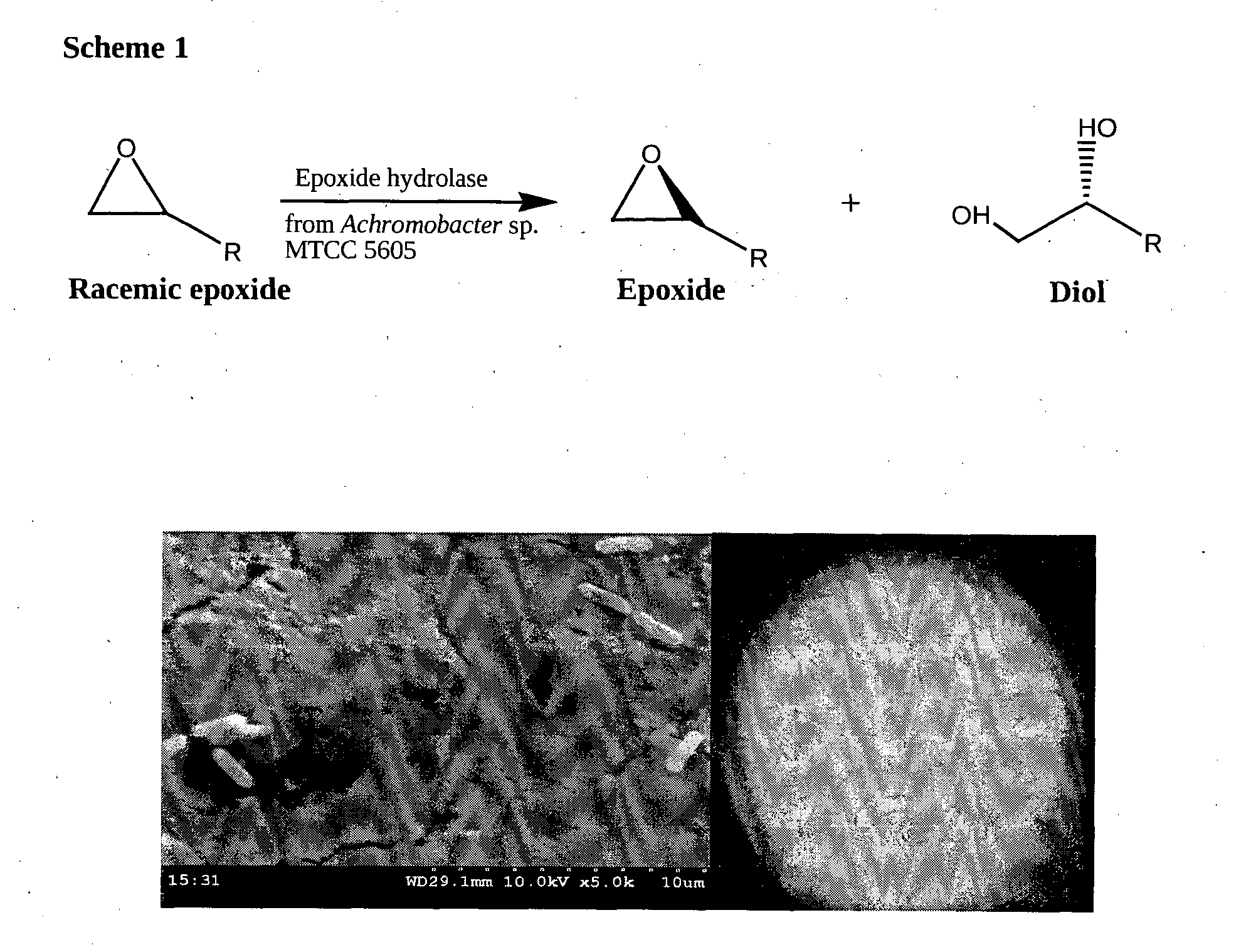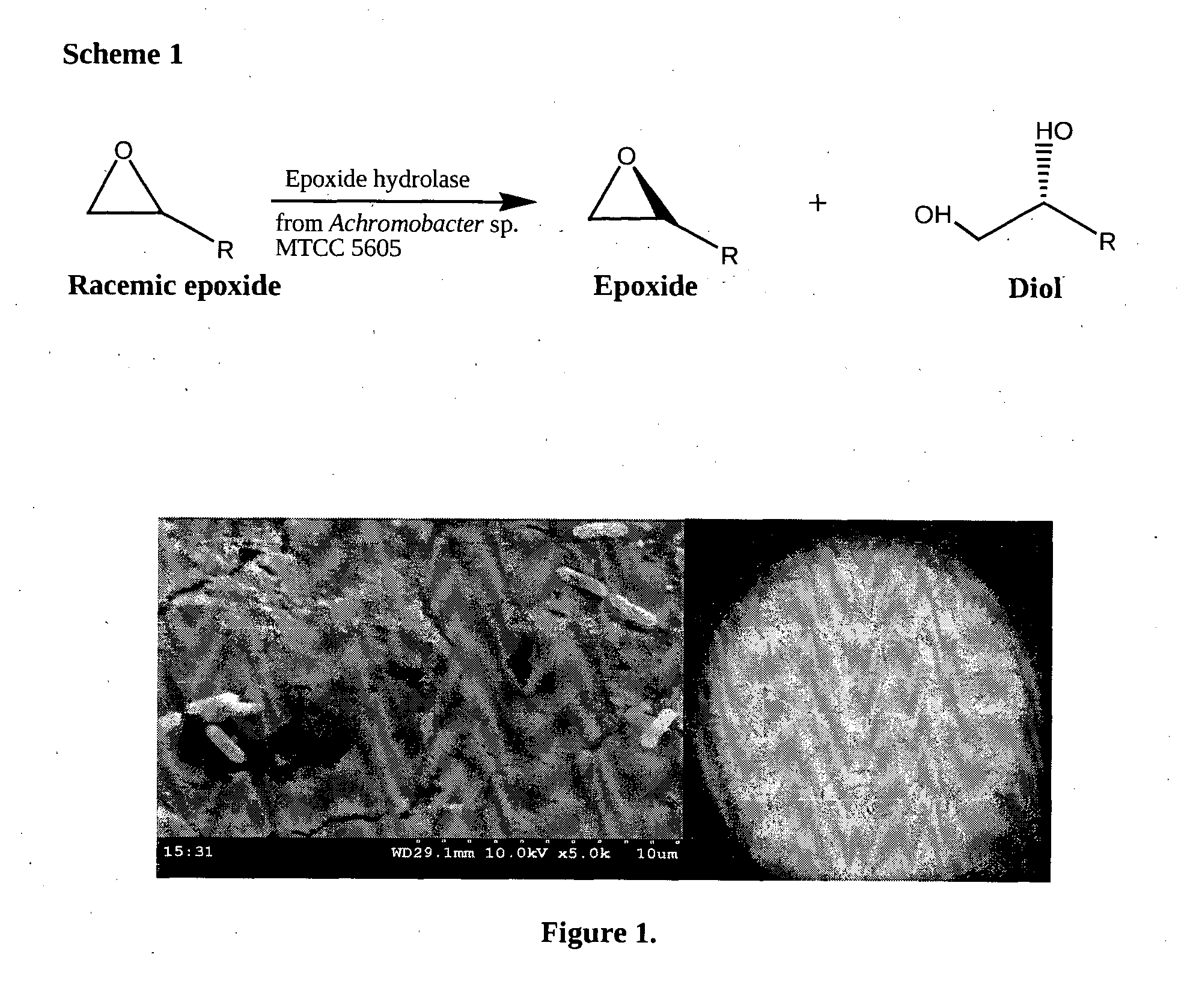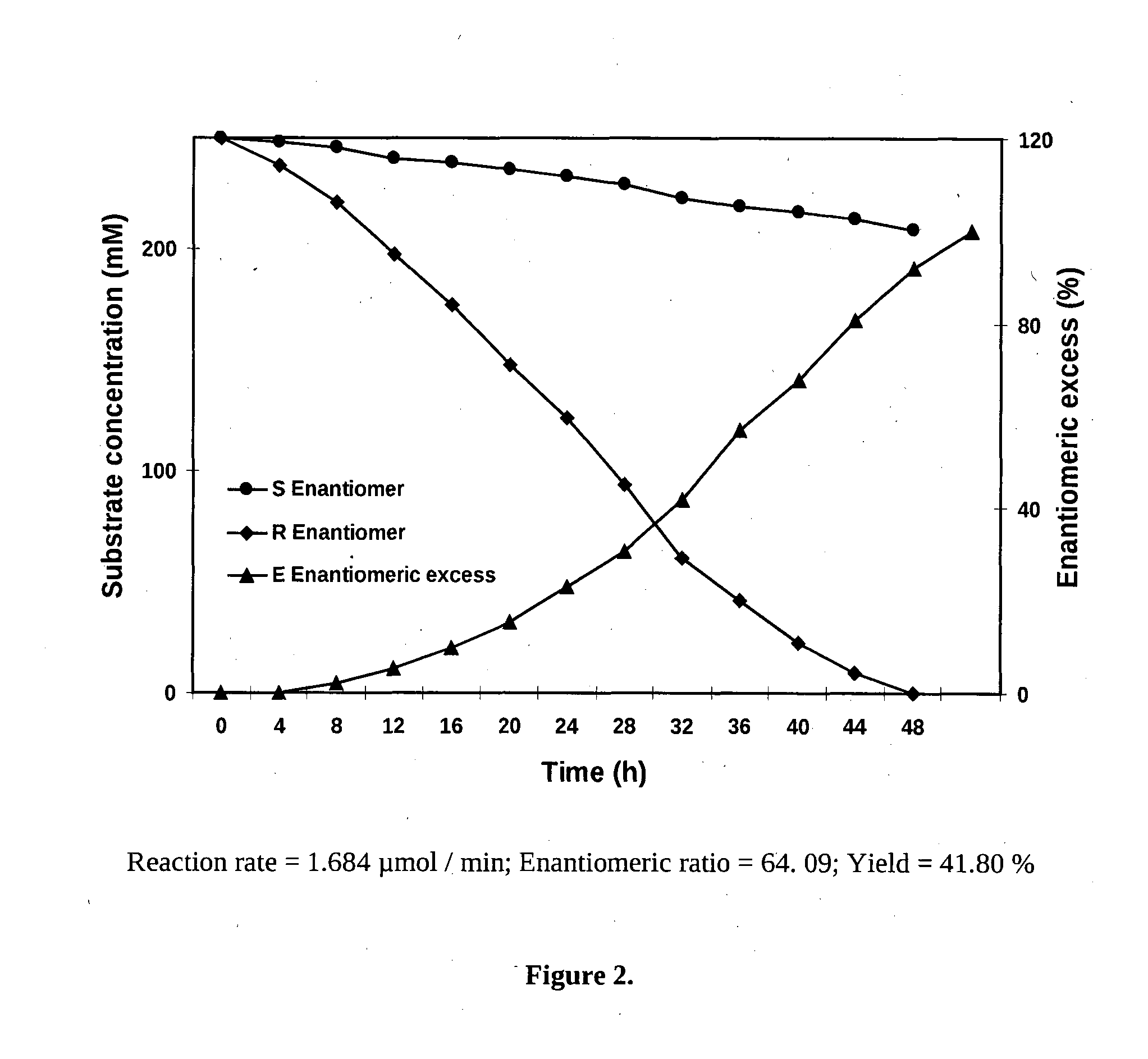Novel bacterial strain of achromobacter sp. mtcc 5605 and a highly enantioselective epoxide hydrolase isolated therefrom
a technology of epoxide hydrolase and bacterial strain, which is applied in the field of new bacterial strain of achromobacter sp. mtcc 5605 and a highly enantioselective epoxide hydrolase isolated therefrom, can solve the problems of high enantiopurity and yield of optically active compounds, limited complexes, and asymmetric epoxidation using optically active compounds, etc., to achieve rapid
- Summary
- Abstract
- Description
- Claims
- Application Information
AI Technical Summary
Benefits of technology
Problems solved by technology
Method used
Image
Examples
example 1
Isolation and Screening of Strains for Epoxide Hydrolase Activity
[0057]The bacterial strain producing epoxide hydrolase was isolated from petroleum contaminated sludge sample after preliminary screening steps and the enzyme activity was detected using the simple and standard representative of aryl epoxide, i.e., styrene oxide. The substrate was subjected to hydrolysis with whole bacterial cells in 0.1 M Tris buffer at pH 7.5. The reaction was monitored by observing the formation of the corresponding 1,2-diols by thin layer chromatography by comparison with synthesized diols and further confirmed using gas chromatography. The microorganism with high epoxide hydrolase activity was further identified as Achromobacter sp. MTCC 5605 (FIG. 1) based on its morphological, physiological and biochemical characterization (as given in Table 1) followed by 16S rDNA sequencing.
TABLE 1 Morphological, physiological and biochemical characteristics ofAchromobacter sp. MTCC 56051) Morphological charac...
example 2
Kinetic Resolution of Styrene Oxide Using Epoxide Hydrolase from Achromobacter sp. MTCC 5605
[0058]Whole cells of Achromobacter sp. MTCC 5605 at late log phase (resting cells) were added to 0.1 M Tris-HCl buffer at pH 8.0 containing styrene oxide (100 mM) and 0.5% cyclohexane and incubated at 40° C. at 250 rpm. The reaction was terminated by monitoring the complete selective degradation of one of the enantiomer. The remaining epoxide was recovered by extraction with equal volumes of ethyl acetate and the organic layer was dried over Na2SO4, filtered and vacuum concentrated. This concentrated sample was injected into the gas chromatograph (GC) to monitor the enantiomeric excess (FIG. 2). These promising results led to pursue further the biotransformation conditions to optimize the yield and enantioselectivity of the novel epoxide hydrolase. The present invention also provides the optimization of biotransformation conditions, such as culture medium, effect of different reaction conditi...
example 3
Effect of pH on Styrene Oxide Hydrolysis
[0059]Example 2 was repeated with different pH buffers. The epoxide hydrolase activity was detected from pH 7.0-10.0, moderate activity was observed between pH 6.0-7.0 and rapid decrease to no activity was observed under acidic conditions. The results (FIG. 3) suggested that the bioresolution by Achromobacter sp. MTCC 5605 was maximum under alkaline conditions.
PUM
| Property | Measurement | Unit |
|---|---|---|
| Fraction | aaaaa | aaaaa |
| Fraction | aaaaa | aaaaa |
| Fraction | aaaaa | aaaaa |
Abstract
Description
Claims
Application Information
 Login to View More
Login to View More - R&D
- Intellectual Property
- Life Sciences
- Materials
- Tech Scout
- Unparalleled Data Quality
- Higher Quality Content
- 60% Fewer Hallucinations
Browse by: Latest US Patents, China's latest patents, Technical Efficacy Thesaurus, Application Domain, Technology Topic, Popular Technical Reports.
© 2025 PatSnap. All rights reserved.Legal|Privacy policy|Modern Slavery Act Transparency Statement|Sitemap|About US| Contact US: help@patsnap.com



